How To Soundproof Windows Without Replacing Them?
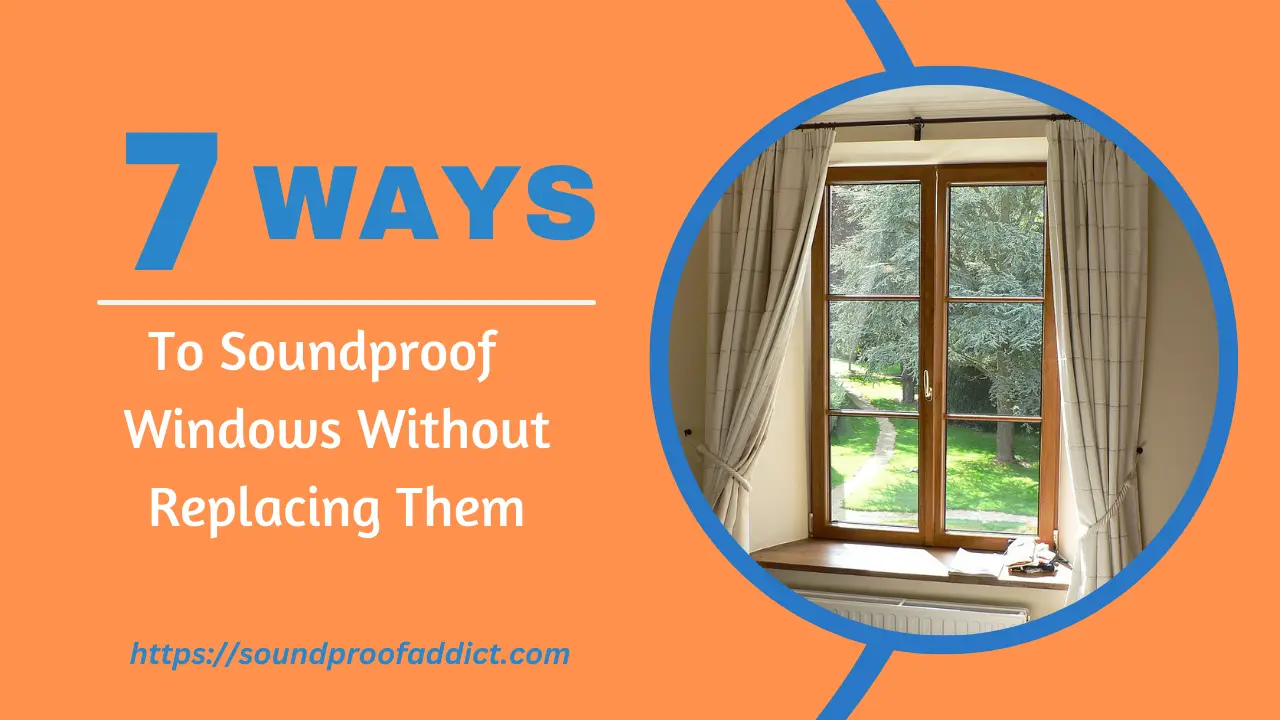
If you want to soundproof your window better than ever before, you need to replace it. But this route of soundproofing will cost you a ton of money.
So if you want to save that money and want to soundproof your windows without replacing them, you are in the right place!
In this guide, we will walk you through 7 Lesser-known methods to effectively soundproofing windows without replacement.
So if you are ready to do so then let’s get started!
How to soundproof windows without replacing them? 6 ways
Here are six methods that can help you soundproof your windows without replacing them.
1. Use Cellular Shades

Cellular shades, also known as honeycomb shades are a popular window treatment option that offers both aesthetic appeal and soundproofing benefits.
They are constructed with a unique cellular design, resembling honeycombs when viewed from the side.
They are well known for their sound-dampening properties and their unique cellular structure that helps trap and absorb sound waves.
Their price can be anywhere ranging from $50 to $150 depending on the size and the fabric material. There are some other benefits of Cellular Shades including:
- Insulation – Multiple layers of fabric create air pockets, providing insulation and noise reduction.
- Thick material – Absorbs sound vibrations, reducing the amount of sound from getting through the windows.
- Tight fit – Custom-made to fit perfectly in the window frame, to minimize noise leakage.
- Sound absorption – Honeycomb-shaped cells trap sound waves, making your space quieter.
- Light control – Adjust the amount of natural light entering your room.
So if you want to soundproof your windows without replacing them, this is my primary recommendation. Give it a try!
Other than that, you can it for noise-reducing for your jalousie window without replacing it and also for treating window in rental properties.
2. Install Soundproofing Window Inserts
Window inserts are the same as they sound, they are removable panels that are installed on the interior side of windows, creating an additional barrier against outside noise.
These window inserts are mostly used in residential and commercial settings for various purposes, including soundproofing, UV protection and draft reduction as well.
The price of window inserts largely depends on the size and the material. On average, their prices range from $150 to $500 per window. Inserts with additional features may be on the higher end of the price spectrum.
In my opinion, window inserts are excellent option for soundproofing a single-sheet window or dealing with a noisy window. They work great for acoustic treatment!
Anyway, here’s a quick guide for soundproofing windows without replacement with window inserts to help you out:
- Measure your windows.
- Order inserts that fit perfectly and offer a good noise-reduction.
- Remove any screens that your window has.
- Now, place the inserts inside the window frame.
- Lastly, don’t forget to seal the edges with caulk.
3. Use acoustic sealant to seal the gaps
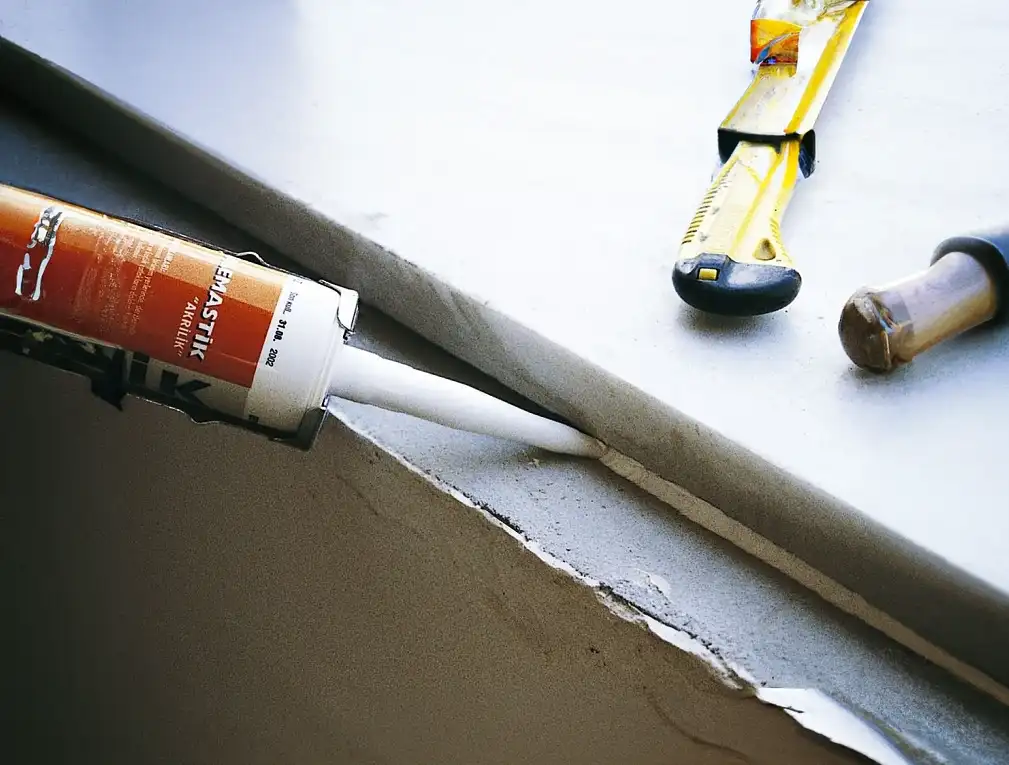
When it comes to soundproofing windows without replacing them. Sealing the gaps and cracks can prove to be a game changer.
You’ve probably heard this before, but it’s worth mentioning again. Whether they’re small or big, any gaps or cracks in your window frames can let noise pass through easily. That’s why it’s essential to seal them up to keep the noise out through your old window.
Here’s a 4-step guide:
- Assess the Gaps: First things first, go and take a look at the window frames for any gaps or cracks with your eagle eyes. Pay attention around the edges, where the frame meets the wall, or between movable parts of the window.
- Prepare the Surface: Before applying the sealant, give it a clean and dry area thoroughly. Remove any dirt, dust, or old caulking to ensure proper adhesion.
- Apply Acoustic Sealant: Now, using a caulk gun, fill the gaps and cracks that you have found with acoustic sealant. Be careful not to overfill or underfill the gaps.
- Smooth and Finish: Use your fingers or suitable tools to smooth out the sealant and create an even appearance. Allow it to dry according to the manufacturer’s instructions. Typically 24-48 hours.
I personally have used this sealant to soundproof my Velux window, and the results in terms of noise reduction were remarkable. Give it a try and soundproof your windows without replacing them.
4. Build a window plug with soundproofing materials
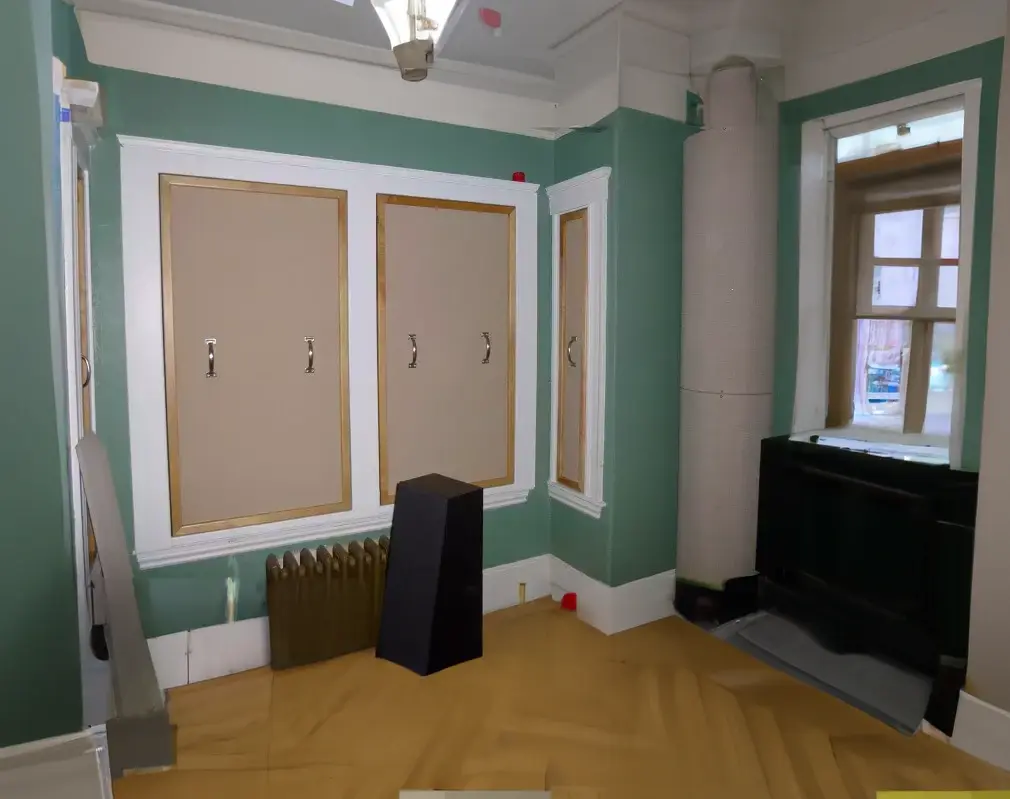
A window plug is a practical and temporary soundproofing solution for window that can significantly block noise transmission through windows. It is mostly used for temporary soundproofing.
The best thing about these plugs is that they can be easily installed and removed without causing any damage to the window frames.
Window plugs can range from $20 to $100 per unit. But DIY options using materials like foam or plywood tend to be more affordable than that.
So if you decided to soundproof your window without replacing it with a window plug. Here’s a 7-steps guide for making your own soundproofing window plug:
- Measure the Window: Start by measuring the dimensions of the window frame where you want to install the plug. Measure the width, height, and depth of the window frame accurately.
- Gather Materials: Collect the necessary materials, including a dense soundproofing material such as foam or acoustic panels, a utility knife or saw, measuring tape, adhesive or caulking, and a sturdy board or plywood to serve as the base.
- Cut the Base: Using the measurements from step 1, cut the base material (board or plywood) to fit the dimensions of the window frame.
- Cut the Soundproofing Material: Measure and cut the dense soundproofing material to match the size of the base. Cut it with a utility knife or saw to achieve a clean and accurate cut.
- Attach the Soundproofing Material: Apply adhesive or caulking to the back of the soundproofing material and carefully press it onto the base, and make sure it is firmly attached and centered.
- Fit the Plug: Insert the window plug into the window frame, ensuring it fits well and covers any gaps or openings. Press it firmly into place to create a tight seal.
- Make Adjustment: Test the effectiveness of the window plug by monitoring the noise reduction. If needed, add additional layers of soundproofing material for optimal results.
5. Replace the old weather-stripping
Replacing the old weather-stripping to soundproof your bay window or any windows is a smart idea. It’s funny that how many of us forget about replacing it for years and years. And more funny thing is, some people don’t even realize that weather-stripping needs replacement in the first place.
So, if you haven’t thought about it yet, now might be the perfect time to replacing it with a new one. Here’s a what you can do:
- Assess the condition: Start by inspecting the existing weather-stripping for wear and tear, such as cracks, gaps, or missing pieces.
- Remove the old weather-stripping: Once you have done step 1, use a putty knife or screwdriver to gently remove the old weather-stripping. And also take your time to clear the adhesive that has been left behind.
- Measure and cut new weather-stripping: Use a tape measure to measure each window track. Cut new weather-stripping to match these measurements.
- Install the new weather-stripping: Now, simply peel the backing from the strip, place it where you want it to be, and press the weather-stripping firmly into place. That’s it!
Replacing old weather-stripping helps improve sound insulation. In addition, it can also improve energy efficiency by preventing drafts and reducing air loss. This can save on energy bills.
By the way, if you have never installed weather-stripping in your window frame before, I highly recommend doing so. It is an incredibly effective material for soundproofing.
6. Install a heavy and thick sound absorbing curtain
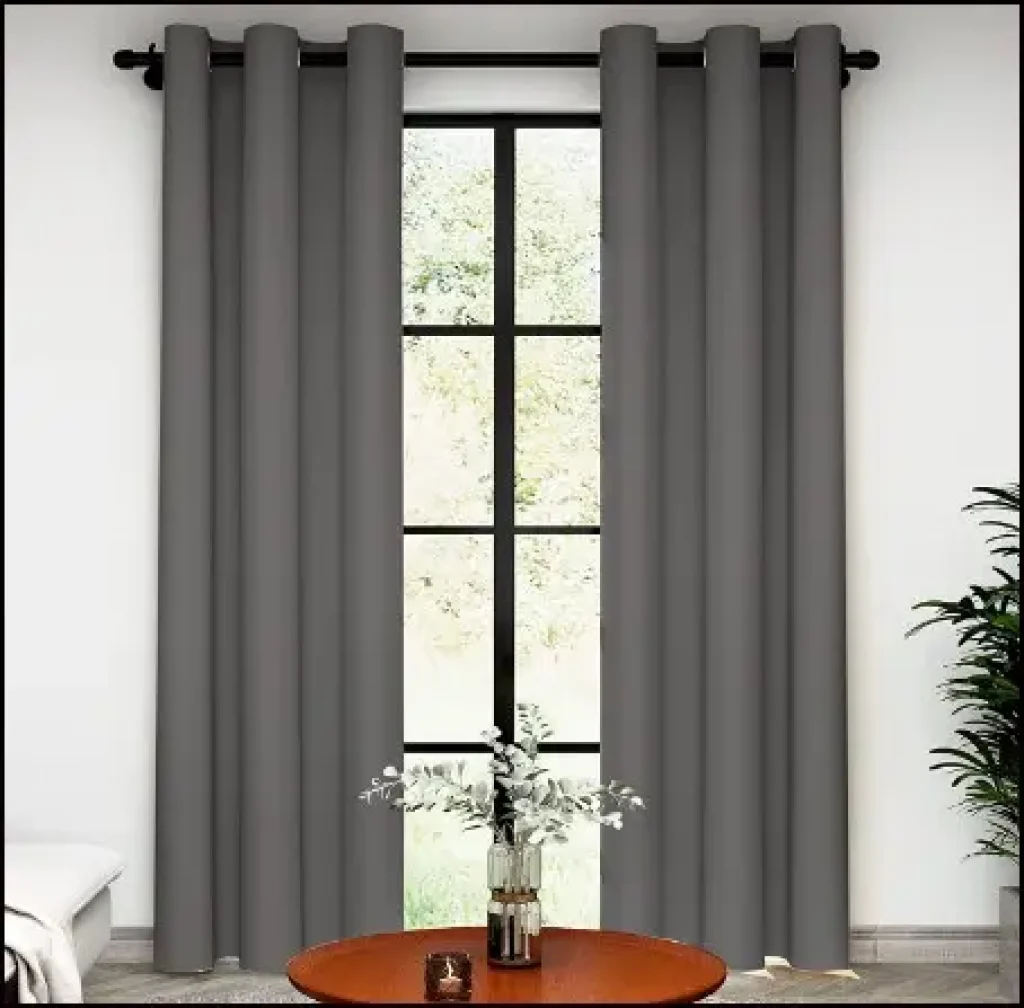
Installing heavy and thick sound absorbing curtains is a great way to soundproofing without the necessity of window replacement. As their name suggests, these curtains are designed with the aim to reduce noise.
Heavy and thick curtains typically have multiple layers to take their sound-absorbing properties capacities to the next level.
And here’s a secret for you: curtains with more layers perform better at noise reduction. Ideally you should choose a curtain with at least 3-layers.
Now, you may wonder about the cost. Well, they are not expensive at all. You can find excellent 3-layered soundproofing curtains for under $60 or less.
So go and try sound absorbing curtains. They will definitely help you noise-proof your sash windows without replacing them and you’ll get a substantial result.
7. Try using Soundproofing window films
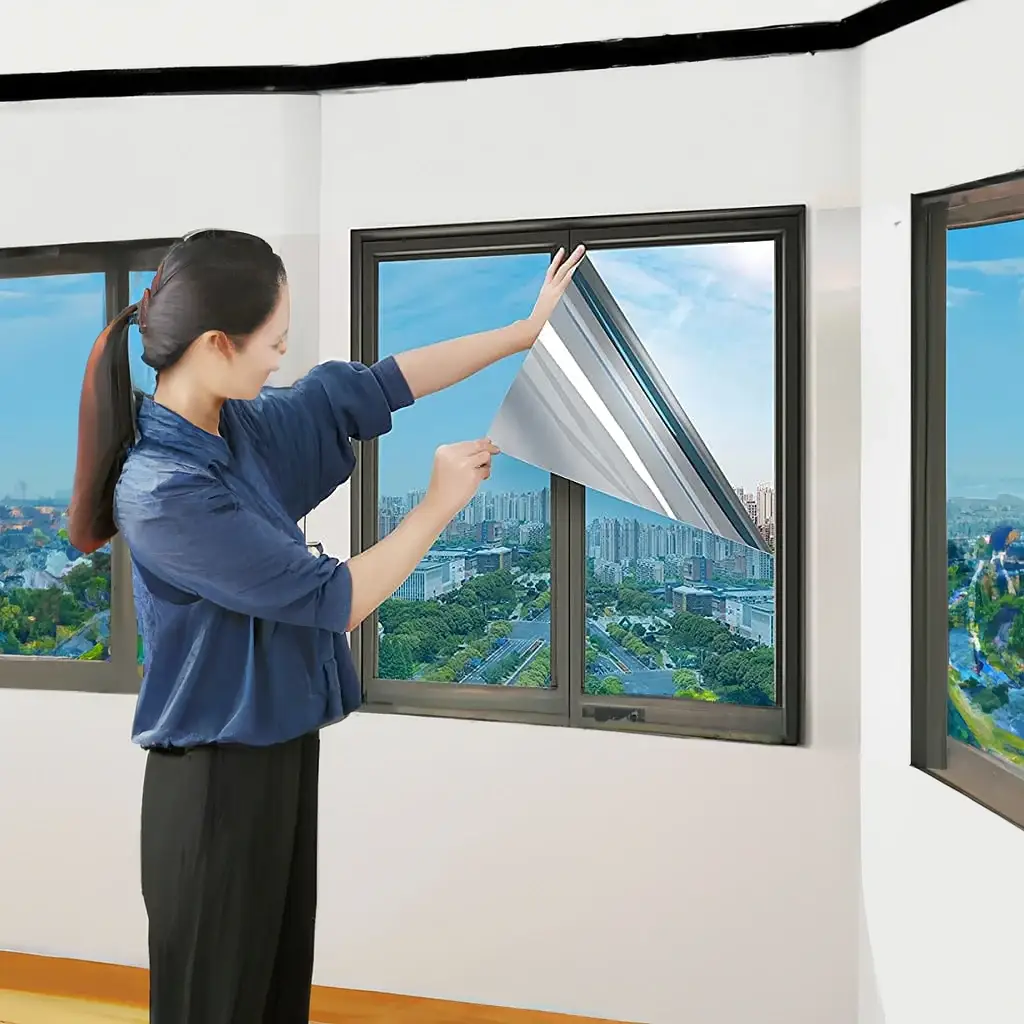
Soundproofing window films can be an affordable way to keep noise out without needing to replace windows. They are super simple to install yet effective at blocking out unwanted sounds.
Here are 4 tips to consider when using them:
- Opt for high-quality films: Pick films that are made for soundproofing. Thicker and denser, they provide better noise reduction.
- Measure and cut precisely: Before installing, measure windows carefully for an exact fit. Use a sharp knife or scissors to cut along the lines.
- Clean the windows: Ensure windows are thoroughly clean before applying the film. This helps it stick better and prevents air bubbles.
- Use static cling film: Consider using static cling window films. They adhere without any adhesive, making installation super easy. Plus, if you ever need to remove them, it’s a cinch!
Soundproofing window films bring additional perks to the table. Not only do they reduce the noise level, but they also help regulate temperature and reduce bothersome glare.
Furthermore, if you want to soundproof your sliding window effectively then read this post.
FAQs about Soundproof Windows Without Replacing Them
Amidst the hustle and bustle, we often overlook soundproofing our windows. But, finding a solution without replacing them can be tricky. Don’t worry! We have a list of FAQs to help.
1. Is it possible to soundproof windows without replacing them?
Yes, it is possible to soundproof windows without replacing them. There are various methods and products available specifically designed for this purpose.
2. Can window inserts really help in reducing noise?
Yes, window inserts can significantly help in reducing noise. These inserts act as an additional layer of insulation, effectively blocking sound transmission through the windows.
3. Are soundproof curtains effective in blocking outside noise?
Absolutely, soundproof curtains are effective in blocking outside noise. They are made from heavy materials with sound-dampening properties, providing a barrier against noise infiltration through windows.
4. How does window film contribute to soundproofing?
Window film contributes to soundproofing by adding an extra layer of material to the window, which acts as a sound barrier. It helps in reducing the transfer of sound waves and minimizing outside noise.
Wrap Up
In conclusion, soundproofing windows without replacing them is not only possible but also more cost-effective and doable. (Related: Cost of soundproof windows)
By implementing the seven methods discussed in this guide, you can effectively create a quieter and more peaceful environment in your home or office.
From using cellular shades and soundproofing window inserts to sealing gaps with acoustic sealant and installing heavy soundproofing curtains, each method offers its own unique benefits and price points.
Whether you’re on a budget or looking for a temporary solution, these methods allow you to improve sound insulation without the hefty price tag of replacing your windows.
So go and try the methods that you found suitable and enjoy your soundproofed window. Best of luck!
Thank you for dedicating your time to read.
By the way, if you’re want to know whether double-paned windows are soundproof or not, you can find the information in the post linked below. Give it a read!
